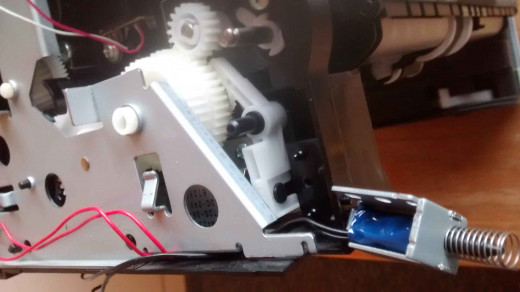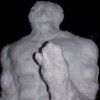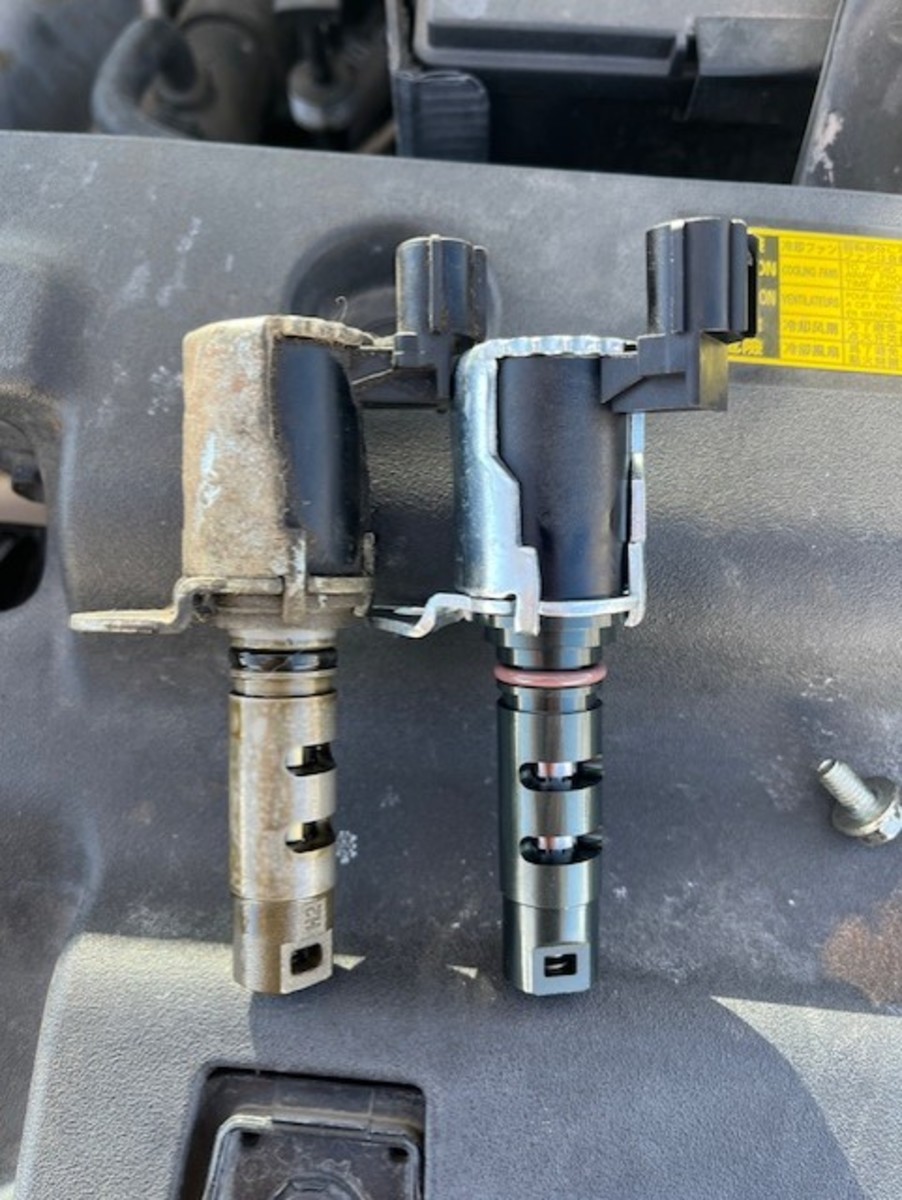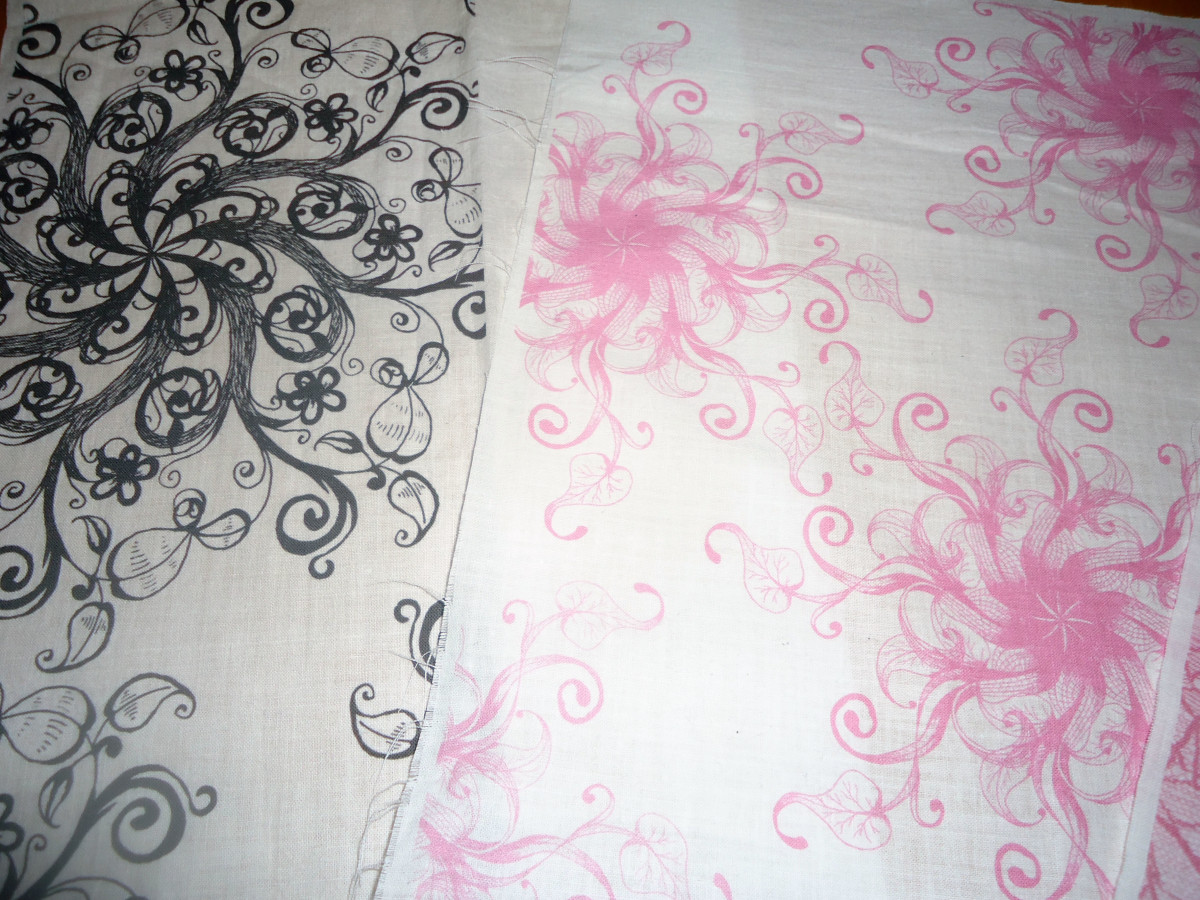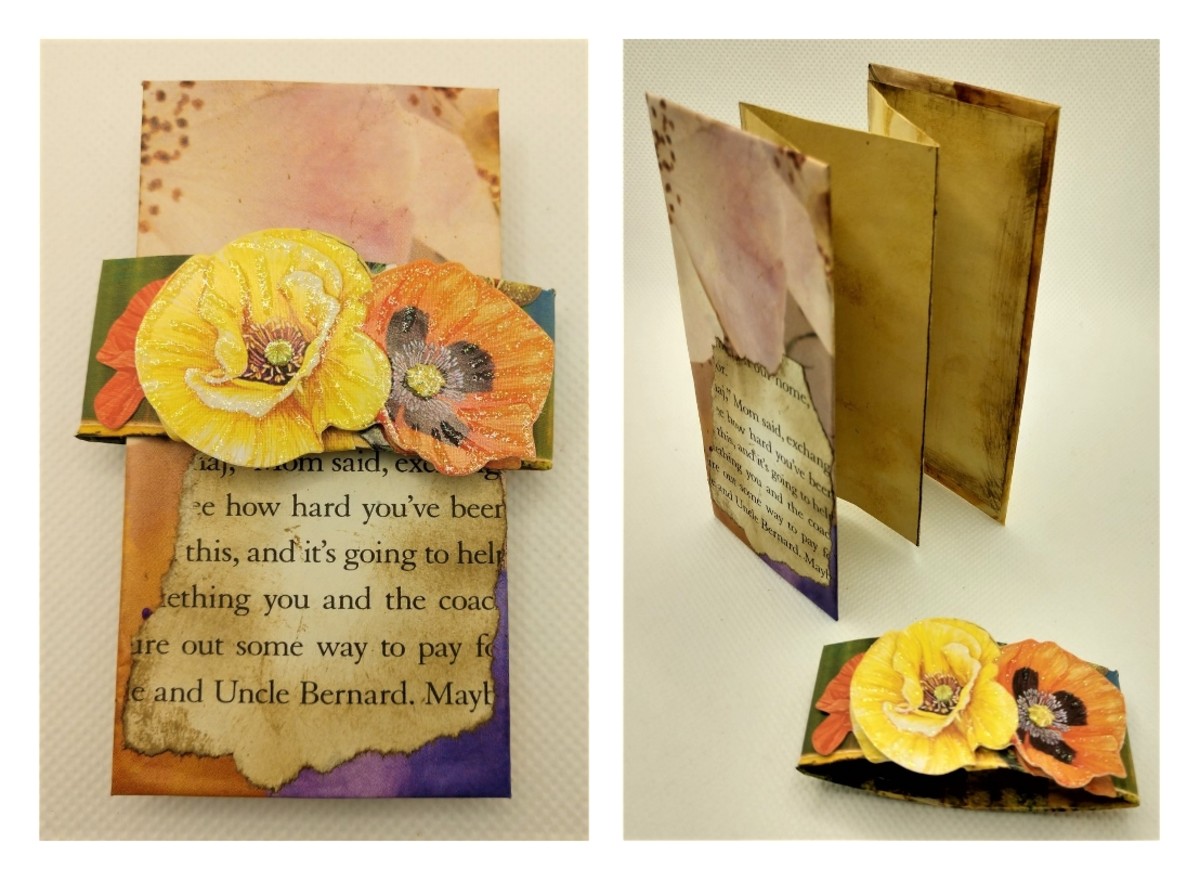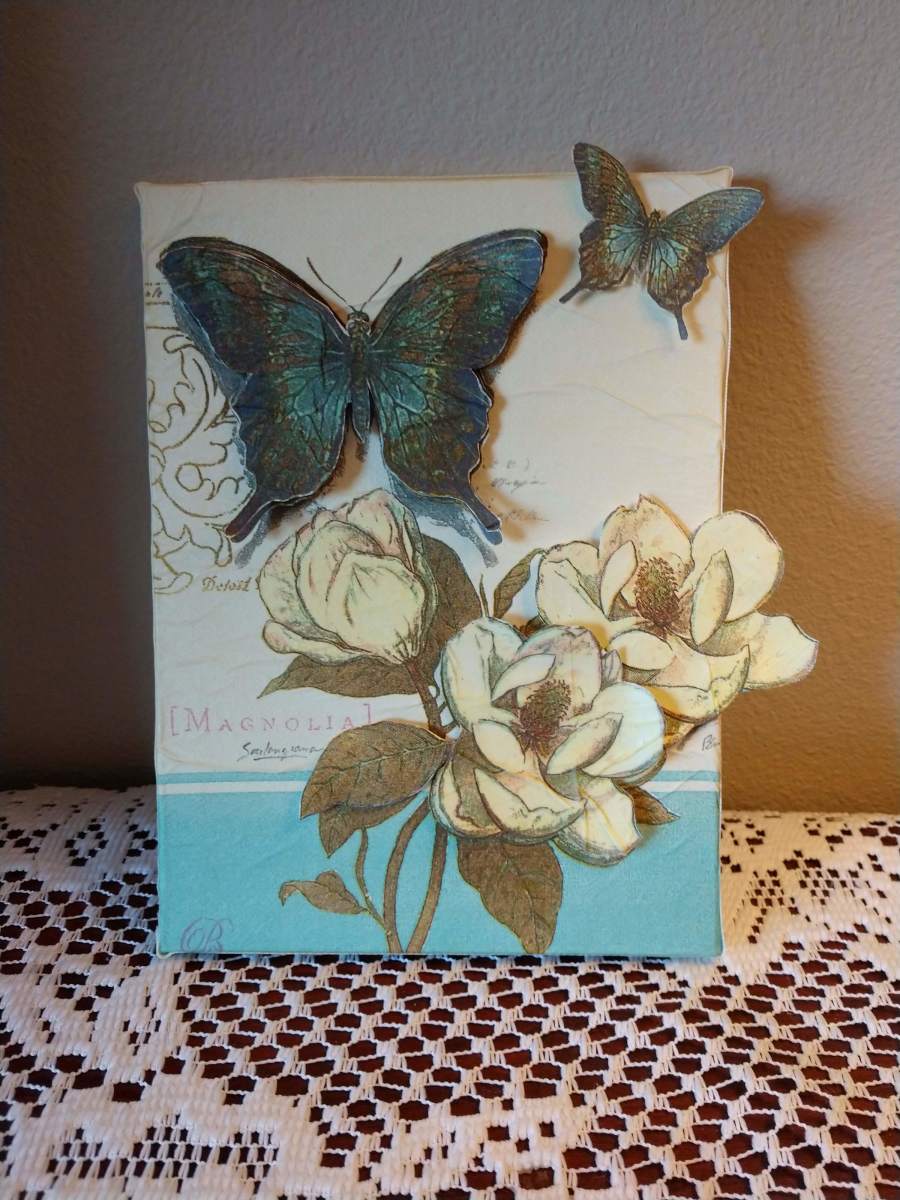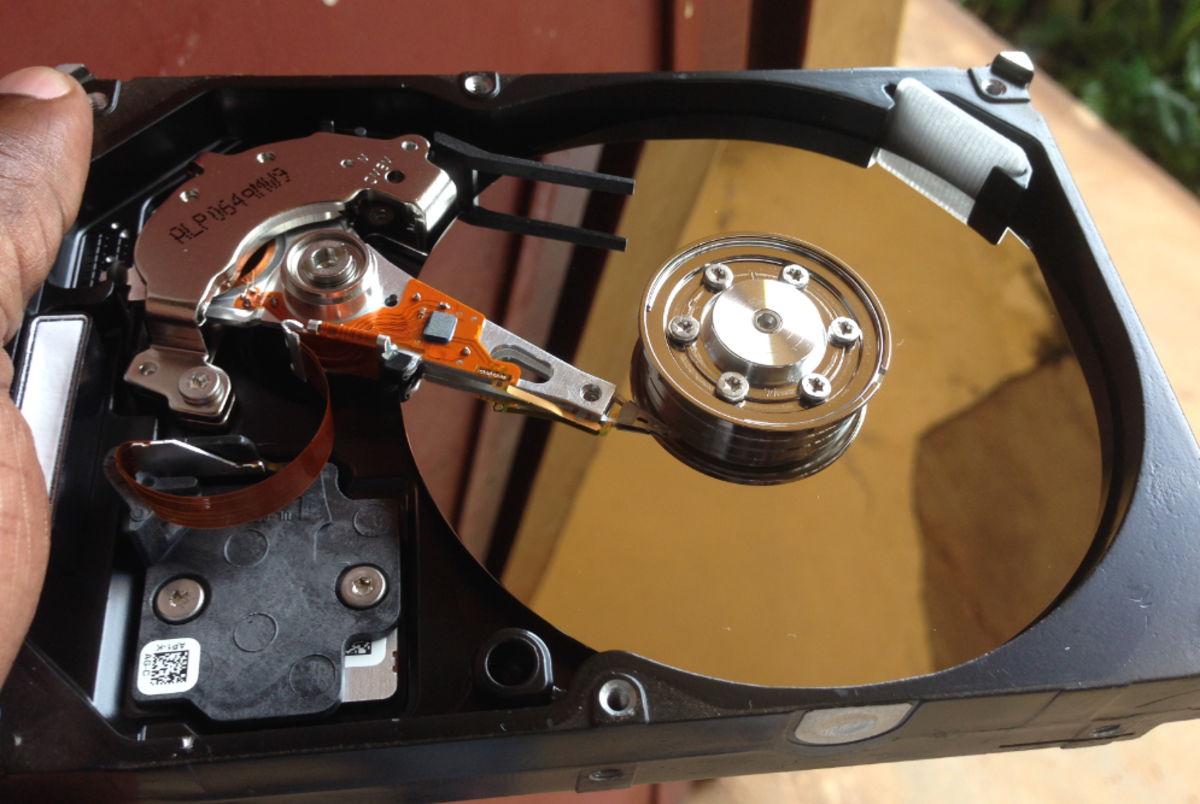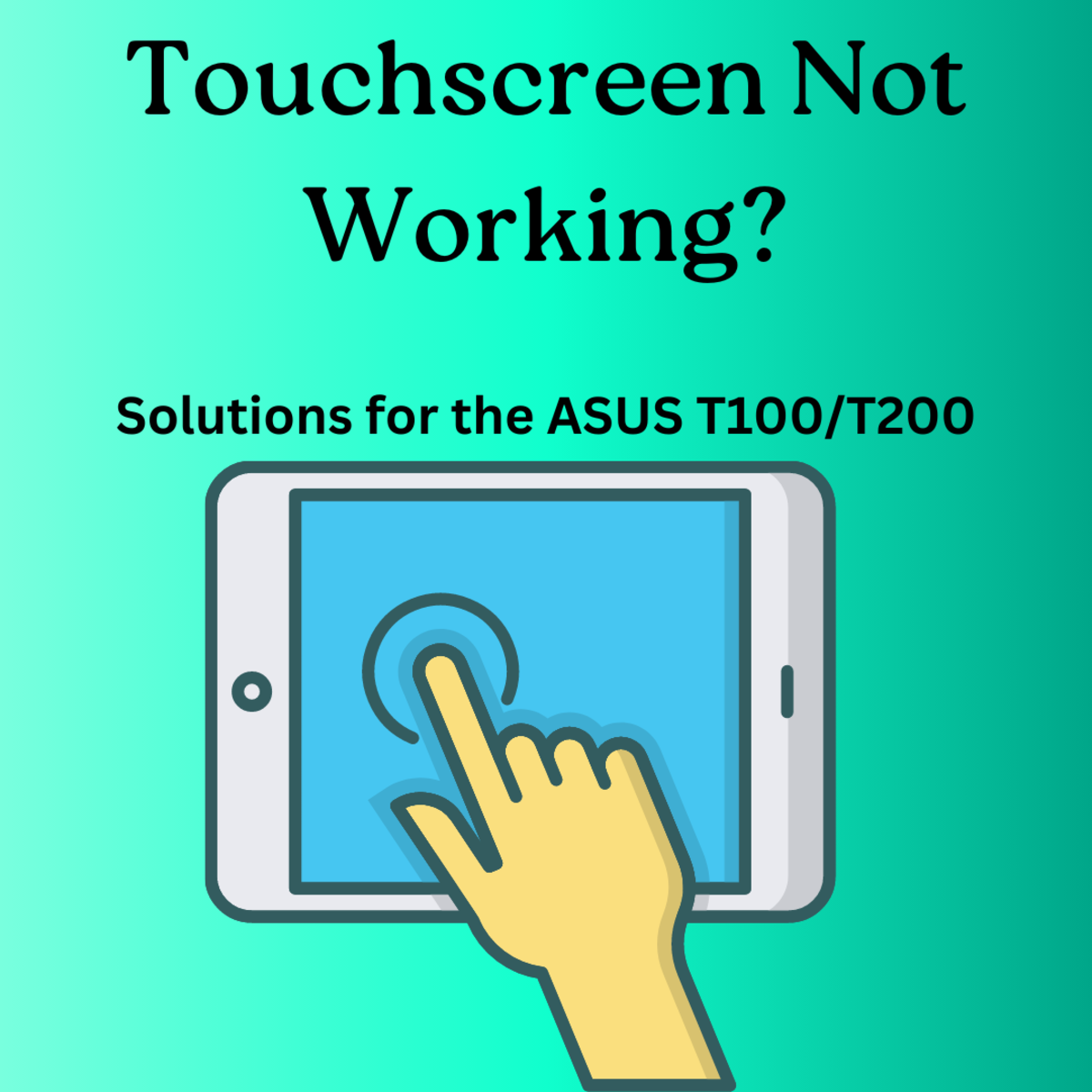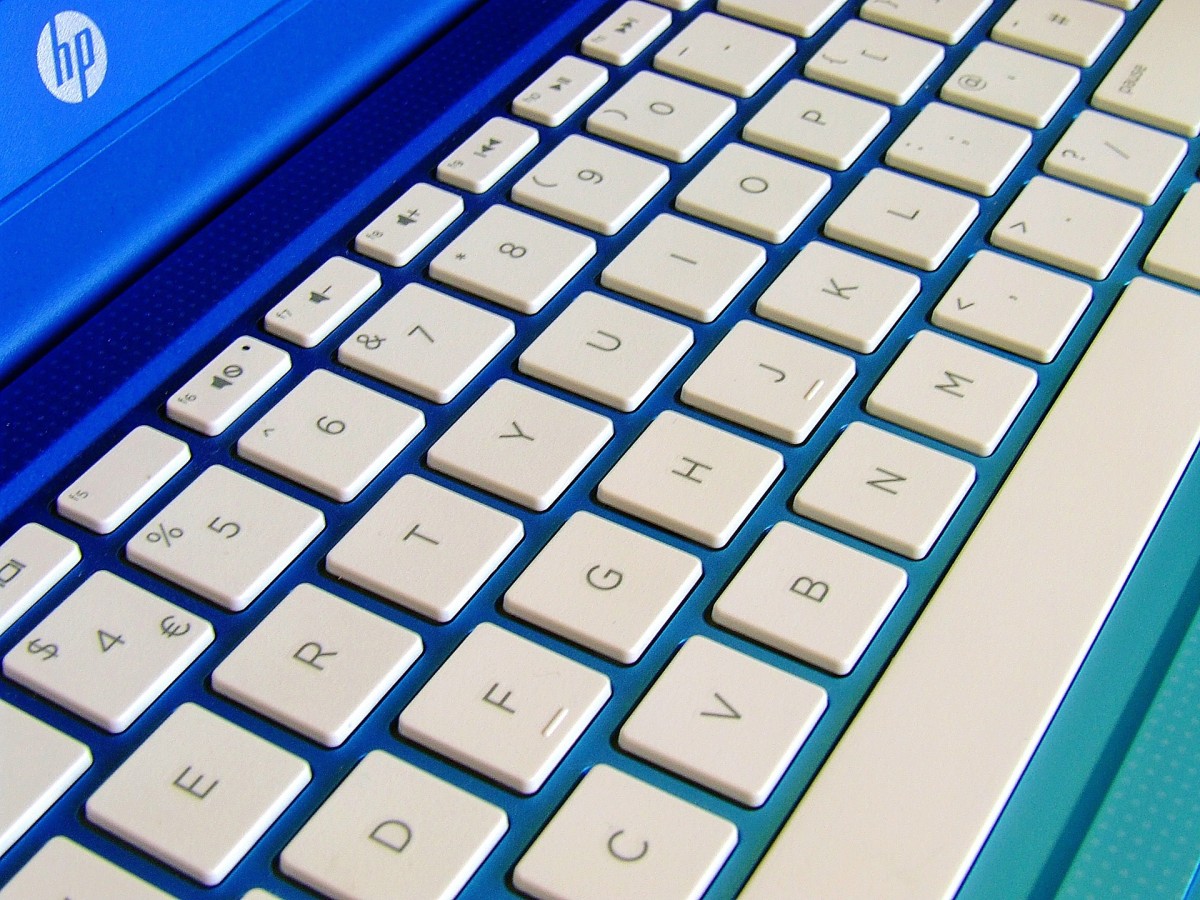- HubPages»
- Technology»
- Computers & Software»
- Computer How-Tos & Tutorials
Brother Printer Paper Jam Repair
Type of Printer
Brother MFC 7820N mono laser multi-function printer. It is likely that Brother uses the same mechanism in other printers in its range.
Symptoms
The printer initially feeds a first sheet correctly from the paper tray. However a second sheet is then fed before the first sheet is fully transported through the printer. The printer stops with a paper feed error. Opening the printer to remove the jam reveals the second sheet overlapping the first by about half a sheet.
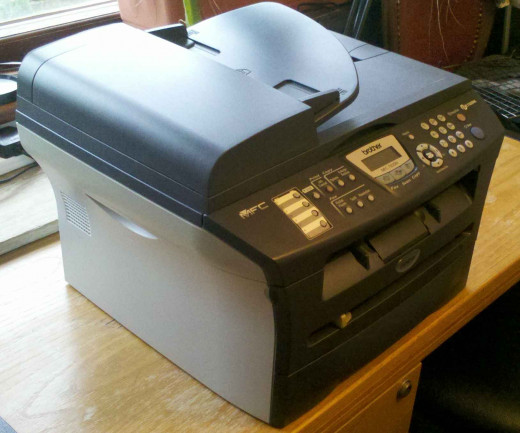
Cause
The paper feed error described in Symptoms was found to be caused by an adhesive leakage from a foam rubber buffer pad on a solenoid actuator in the paper feed mechanism.
The adhesive held the lever actuator closed, resulting in a continuous feed allowing a second sheet of paper to be fed whilst the first sheet was still being processed.
Before the Repair
- Abbreviations: RH = right hand; LH = left hand; pcb = printed circuit board.
- Please refer to the photographs.
- Use a small tray or lid to hold dismantled parts like screws, springs, gears etc.
- To gain access to the solenoid it is necessary to remove the left hand beige plastic panel (shown in place in photo 1) from the printer.
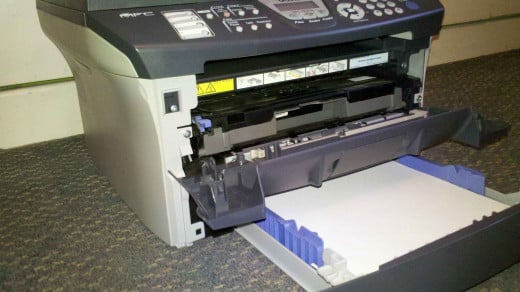
Start The Repair
Remove the paper tray. Open the toner access lid as indicated in photo 2, and remove the toner-drum unit. Keep the toner unit level, and place in a plastic bag in a dark cupboard.
It is possible to proceed with the toner access lid in place, but removal makes the repair easier. To remove the lid, pop the black plastic connector arm (for the toner drum drive) out of the lug at the LH end of the access lid, and slide the arm back into the printer.
With the lid fully open, disconnect the LH lid stay by pressing it leftwards, bending the lid so the stay is above the plastic pin. Then, still with the lid fully open, press it to the right to slide it out of its hinge pins and the RH lid stay.
Remove the mid-height screw shown in photo 2.
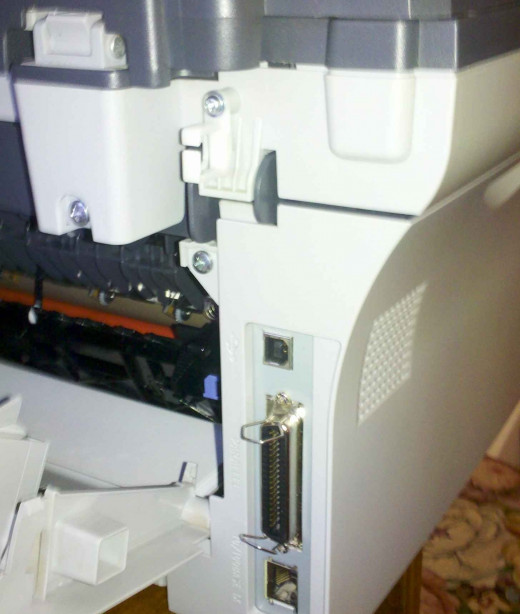
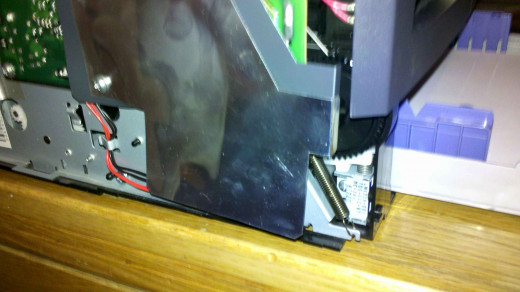
Accessing the Broken Part
Looking at the back of the printer, open the jam access lid (shown open in photo 3) and disconnect the stay (on the LH side viewed from the back).
Lower the lid further and the slot in the LH hinge shroud can be pulled over the flats on the LH pin.
Slide the lid off the other pin. Remove the screw on the triangular tab under the main hinge as shown in photo 3.
The LH beige panel can now be removed; noting that the panel is clipped at the front, at the back and at the top. It may help to raise the top half of the MFC to expose the LH beige panel clips.
The LH side of the printer without the LH beige panel is shown in photos 4 and 5.
Remove the shield (photo 4) by unscrewing the single screw and unclipping the tab at the top of the pcb.
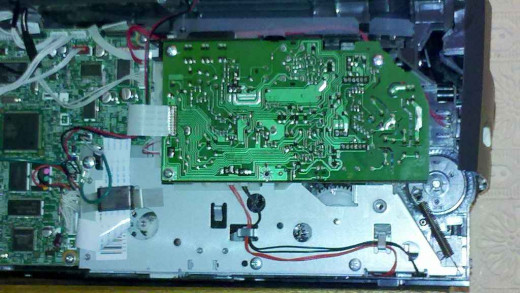
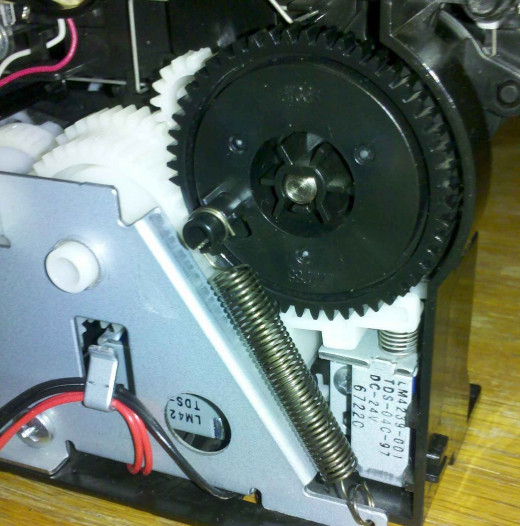
Fixing the Broken Part
The offending solenoid is shown under the black gear to the RH of the spring in photos 5 and 6.
It may have been possible to remove the foam pad (shown in photo 10) by the use of a small flat screwdriver, without any further dismantling. That was not attempted for this repair.
Remove the pcb by undoing its mounting screws (see photo 5) and disconnecting the wiring.
The wiring plugs are uniquely keyed to facilitate correct reconnection. The ribbon cable (shown on the LH edge of the pcb in photo 5) is a push fit in the socket on the other pcb.
Removal of the pcb exposes the black plastic gear and spring (photo 6).
Note Photo 6 shows a close up of the lower RH corner of Photo 5 after the PCB has been removed.
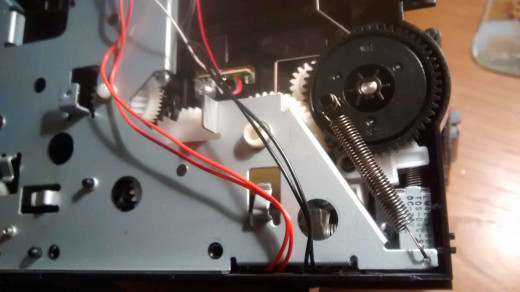
The screw that holds the solenoid in place is shown on photo 7 between the chassis and the spring.
Remove the spring by unhooking it, and the black plastic gear, by pressing the clip holding it onto the shaft, to uncover the solenoid (photo 8).
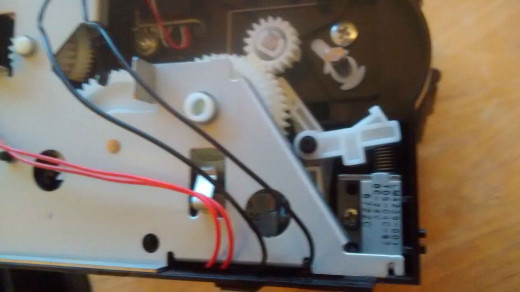
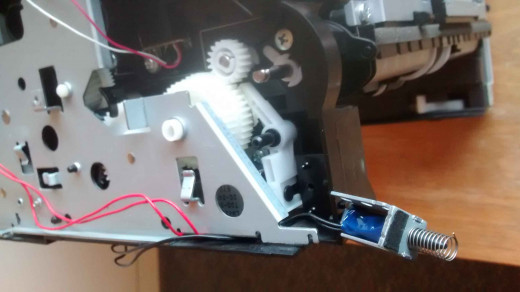
Unscrew the solenoid fastener and lift out the solenoid with its spring and lever, revealing the foam pad, as shown in photo 9.
Remove the foam pad and clean the solenoid frame of any adhesive residue, as shown by photo 10. A new foam pad is not needed.
Replace the solenoid and rebuild the components into the printer, using the photos as a guide to re-assembly.
